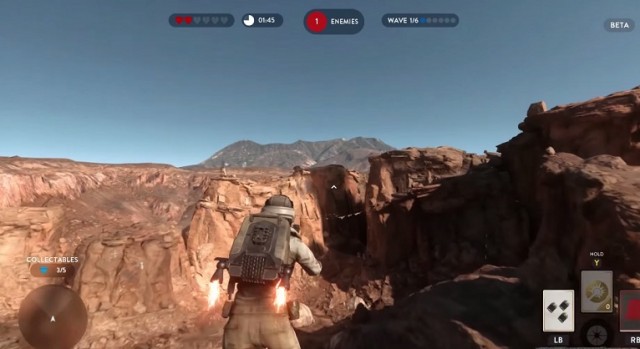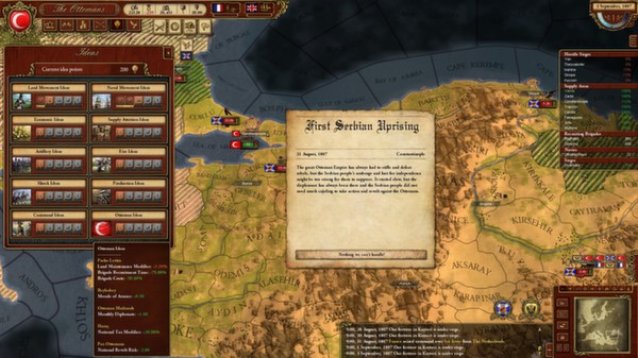

It was never going to be easy for BioShock: Infinite. Delivering a triple-A game in today’s market is a tall enough order for the best of studios, but living up to the expectations of being ‘the spiritual sequel to the highest-rated first person shooter ever’ is a monumental task (pressures the team admitted to feeling). But Irrational Games never backed down from the challenge, with studio head Ken Levine promising a game ending unlike any before.
Coming from the minds behind BioShock – a dystopian look at unbridled scientific and artistic progress – BioShock: Infinite isn’t so easy to classify. It still bears a strong moral, intellectual, and emotional question at its core, but given how far shooters have come since the studio’s last release, is an idea still all that’s needed for a near-perfect gaming experience?
As it turns out, it isn’t. Luckily, that’s not an issue thanks to Infinite‘s rich and layered approach to environmental design, art direction, animation, and open-ended combat encounters. And while BioShock: Infinite may not be the overly ‘preachy’ examination of American exceptionalism or patriotism run rampant that some expected, it’s safe to say it’s a better game than its predecessor in most ways.
That isn’t to say that the larger themes or ideas being explored throughout the course of Infinite‘s campaign aren’t as well-crafted or intelligently-framed as those of its predecessor, but if BioShock proved that this team can make a statement about humanity, Infinite‘s goals are much more specific. In other words, the two characters at the heart of this story are what matters, not what forces or ideals shaped the world they inhabit. The scale starts smaller, and generally stays there, meaning a tighter, better-paced through-line for players to grab onto, and hang on for dear life as the world around them starts crumbling.
Instead of a nameless, voiceless protagonist, Infinite is centered on Booker DeWitt, a former Pinkerton agent and soldier who witnessed the Wounded Knee Massacre firsthand. The player is thrust into the game without explanation or back story, simply hired to find a girl, and a photo to identify her. The allusions to BioShock are clear from the very start, but it isn’t long before the ways in which Irrational’s storytelling skills have improved become clear.
Much has been made of Columbia, the city in the sky and backdrop of Infinite‘s action, but with every new stage, scene, museum, and hall of wonders the city’s alien nature and incongruity hint that a Columbia is not as advanced or idyllic as it seems. The picturesque mood soon gives way entirely, as citizens and police turn on Booker as he attempts to track down Elizabeth and escape to New York City. Finding her poses several challenges, but once Booker and Elizabeth join forces to escape, the real fight starts.
The citizens of Columbia are loyal to Zachary ‘The Prophet’ Comstock, a religious zealot who created the floating city as a haven for extremism, white supremacy, and worship of America’s founding fathers. Needless to say, Booker’s attempts to ‘free’ Elizabeth from her people are met with resistance from enemies both large and small, meaning his military experience comes in particularly handy (and acts as background for one of the game’s most memorable sequences).
The political rivalries and shifts in power that occur as the rebellious Vox Populi gain ground are kept largely to the periphery, and the decision is a wise one. By sticking to the relationship between Booker and Elizabeth Рanything but a straight line from beginning to end Рthe plot manages to stay on point, and avoids being sidetracked by any number of potential tangents that lesser games would pursue at the peril of falling into clich̩s.
Political battles and race riots never deter Booker from his overall goal: get Elizabeth, and get her out. The character motivations may be simple, but set in a world so oppressive and varied, the experience strikes a balance that keeps players moving, being continuously prompted and teased by the pair’s banter, brought to life by voice actors Troy Baker and Courtnee Draper.
Of course, any conversation concerning the writing and characters of Infinite must begin and end with Elizabeth. Not to overstate the successes that the studio has achieved with their leading lady, but after playing through Infinite, gamers may never again want to accept an in-game escort that is vulnerable, obnoxious, or a hindrance to gameplay.
Whether it’s Elizabeth’s ability to scrounge ammunition, health kits, or Salts (used to fuel Booker’s “Vigors,” supernatural attacks) making combat encounters easier, not harder with her in tow, or the incredibly well-directed animation and performance, Elizabeth is sure to be one of the most memorable female video game characters before long. Irrational wanted to achieve something special with Elizabeth, and the result is a resounding success.
From a purely technical standpoint, the choice to have Elizabeth lead, not mindlessly follow the player throughout Columbia, and interact with the environment rather than stand and wait all help build immersion. Add her practicality in combat, and players will actually being to feel that they are playing through the game with her, which in itself is an accomplishment.
Lest we forget, BioShock: Infinite is a shooter, not an interactive movie. Nobody expected a studio like Irrational to deliver a sub-par or uninteresting combat loop – these are the same people who brought us the Houdini Splicers and Big Daddies – but even if the individual encounters aren’t quite as uniquely memorable as those in BioShock (for the most part) the shift in direction is clear; they haven’t set out to create the most dramatic scripted action sequences, but provide players with a larger bag of tricks with which to tackle battle arenas.
The end result is a shooter experience as varied as players want it to be: players who prefer a hit-and-run strategy will work their way through standard soldiers with ease, and empty clip after clip into larger mini-bosses. For the more adventurous players, the blend of Skylines, Vigors, brutal melee attacks and both precision and explosive weapons will make a battlefield your playground, with several large-scale skirmishes scattered throughout the campaign.
It would have been nice to see more variations in enemies (ditto for just about every modern shooter) or more encounters built around larger or more dangerous bosses, but the side effect of that decision is that players are left wanting more. The Songbird remains mysterious and terrifying, never becoming a predictable recurring boss, and more outlandish enemies appearing in the later stages will knock players off-balance just when they think they’ve figured out everything the game has to offer.
It eventually becomes clear that the developers have designed the action to offer players a chance of experimenting and combining strategies, not test their mettle. In other words: death is far less frequent than some might expect, since moving players through the story is the top priority. And in the story department, Infinite is one of the most inspired and well-executed stories of this generation.
Fans worrying that the expansive and high-profile marketing for the game would leave few surprises are also in luck, as Infinite packs a twist that puts BioShock‘s to shame, and manages to be both revelatory and heavily foreshadowed throughout. A bold twist or reveal isn’t impossible to achieve, but following it through to the finish requires conviction, and Irrational doesn’t disappoint.
BioShock: Infinite is built from story and atmosphere first, which alone makes it a must-play experience for any self-respecting shooter fan. Providing an adventure that is as memorable as it is inspired, we’re willing to accept combat that tries to offer an endlessly entertaining and visually stunning experience instead of reinventing the wheel.
Just in case the game’s final moments leave you scratching your head, be sure to check out our BioShock: Infinite Ending Explained post.
BioShock: Infinite is available now for the PC, PS3 and Xbox 360. Game Rant played the PC version for review.
–
Follow Andrew on Twitter @andrew_dyce.




 Game Design Legends All Agree on One Thing: Cloning Sucks
Game Design Legends All Agree on One Thing: Cloning Sucks Tomb Raider Glitches: Infinite Chickens, Flying, Skating & More
Tomb Raider Glitches: Infinite Chickens, Flying, Skating & More Anarchy Reigns Wiki .
Anarchy Reigns Wiki . Where are all Legendary Weapons and Armor in Fallout 4 and What are their effects
Where are all Legendary Weapons and Armor in Fallout 4 and What are their effects Killing Floor 2 Wiki – Everything you need to know about the game .
Killing Floor 2 Wiki – Everything you need to know about the game .